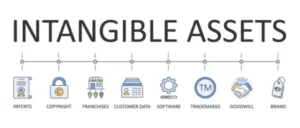Content
As a result, the company’s stock price will rise and fall more frequently, and it will hinder the proper accounting of stock options owned by the company employees. Increased stock prices will mean that the company will pay higher interest to the shareholders. Although financial leverage may result in enhanced earnings for a company, it may also result in disproportionate losses. Losses may occur when the interest expense payments for the asset overwhelm the borrower because the returns from the asset are not sufficient. This may occur when the asset declines in value or interest rates rise to unmanageable levels. If the company opts for the first option, it will own 100% of the asset, and there will be no interest payments.
- A manufacturing company might have high operating leverage because it must maintain the plant and equipment needed for operations.
- Other investors see leverage as an opportunity and access to capital that can amplify their profits.
- For example, a 5 percent increase in operating profit will result in a 5 percent increase in shareholder earnings.
- The value of this ratio is greater the lower is the ratio of variable cost
per unit to price per unit; so, the greater is this ratio, the higher is operating
leverage. - Operating leverage is directly proportional to fixed operating costs, i.e. the higher the fixed operating costs, the higher the operating leverage.
It is true, of course, that if a businesses substitutes capital for labor;
thereby raising its fixed costs, it will simultaneously reduce a variable cost, labor
cost, per unit. Some businesses by their very nature, such as airlines, must employ a high
ratio of capital to labor. If a price much
greater than variable cost per unit cannot be obtained, the business will be liquidated. Leverage can be defined as an investment strategy that involves the use of borrowed capital or financial instruments to finance assets of a business or increase the potential returns on its investments.
Leverage Ratio
As opposed to using additional capital to gamble on risky endeavors, leverage enables smart companies to execute opportunities at ideal moments with the intention of exiting their leveraged position quickly. Financial ratios hold the most value when compared over time https://www.bookstime.com/ or against competitors. Be mindful when analyzing leverage ratios of dissimilar companies, as different industries may warrant different financing compositions. The goal of DFL is to understand how sensitive a company’s EPS is based on changes to operating income.

In business, leverage often refers to borrowing funds to finance the purchase of inventory, equipment, or other assets. Businesses use leverage instead of using equity to finance those purchases. The variability of sales level (operating leverage) or due to fixed financing cost affects the level of EPS (financial leverage). To calculate both https://www.bookstime.com/articles/financial-leverage operating leverage and financial leverage, EBIT is referred to as the linking point in the study of leverage. When calculating the operating leverage, EBIT is a dependent variable that is determined by the level of sales. Clarity in regard to operating and financial leverage is important because
these concepts are important to businesses.
How does Financial Leverage Affect a Business?
As Conrad Lortie observes in an article, small
and medium-sized business often have difficulty using the highly sophisticated
quantitative methods large companies use. Fortunately, he observes, the simple break-even
graph is simple and easy to interpret; yet it can provide a significant amount of
information. The algebra necessary to compute operating and financial leverage, too, is
not very complex. Unfortunately, it comes in a several guises; not all equally easy to
understand or equally useful. In his 1997 article, Rushmore says that positive operating leverage occurs
at the point at which revenue exceeds the total amount of fixed costs.
Baker’s new factory has a bad year, and generates a loss of $300,000, which is triple the amount of its original investment. A company with a high debt-to-EBITDA is carrying a high degree of weight compared to what the company makes. The higher the debt-to-EBITDA, the more leverage a company is carrying. J.B. Maverick is an active trader, commodity futures broker, and stock market analyst 17+ years of experience, in addition to 10+ years of experience as a finance writer and book editor. Our goal is to deliver the most understandable and comprehensive explanations of financial topics using simple writing complemented by helpful graphics and animation videos. At Finance Strategists, we partner with financial experts to ensure the accuracy of our financial content.
How do you adjust for the effects of operating and financial leverage on financial ratios?
Operating leverage is the name given to the impact on
operating income of a change in the level of output. Financial leverage is the name given
to the impact on returns of a change in the extent to which the firm’s assets are
financed with borrowed money. However, it is important to consider that adjusting for leverage has some limitations. For instance, it assumes that the degree of leverage is constant over time, which may not be realistic. Additionally, it ignores other factors like market conditions or industry trends that can affect a company’s performance and risk. It also relies on historical data which may not reflect the current or future situation of a company or its industry.
A corporation that borrows too much money might face bankruptcy or default during a business downturn, while a less-leveraged corporation might survive. An investor who buys a stock on 50% margin will lose 40% if the stock declines 20%.;[6] also in this case the involved subject might be unable to refund the incurred significant total loss. A company was formed with a $5 million investment from investors, where the equity in the company is $5 million, which is the money the company can use to operate.
AccountingTools
Capital-intensive businesses such as utilities and pipelines have much higher debt ratios when compared with the other industries. One of the caveats of reviewing total debt liabilities for a company is that it doesn’t take into account the company’s ability to service or pay back its debts. You can calculate this metric by dividing the total debt—both short-term and long-term, by total assets. A company must be careful while analyzing its financial leverage position because high leverage means high debts. Also, giving ownership may prove to be hazardous for the organization and even result in huge loss and business failure. For the all-equity firm, the pre-tax income is equal to EBIT because there is no debt in the company’s capital structure.
What is financial leverage examples?
- Taking out a loan for an investment property or properties.
- Purchasing a house.
- Borrowing money to launch a business.
- Borrowing money to invest in stocks.
But for the most part, lower ratios tend to reflect higher-performing businesses. The previous year’s earning per share (EPS) was $3.5, and in the current financial year, the EPS is $4.8, if the last year’s EBIT is $8000. DFL refers to the sensitivity of a company’s net income — i.e. the cash flows available to equity shareholders — if its operating income were to change.
